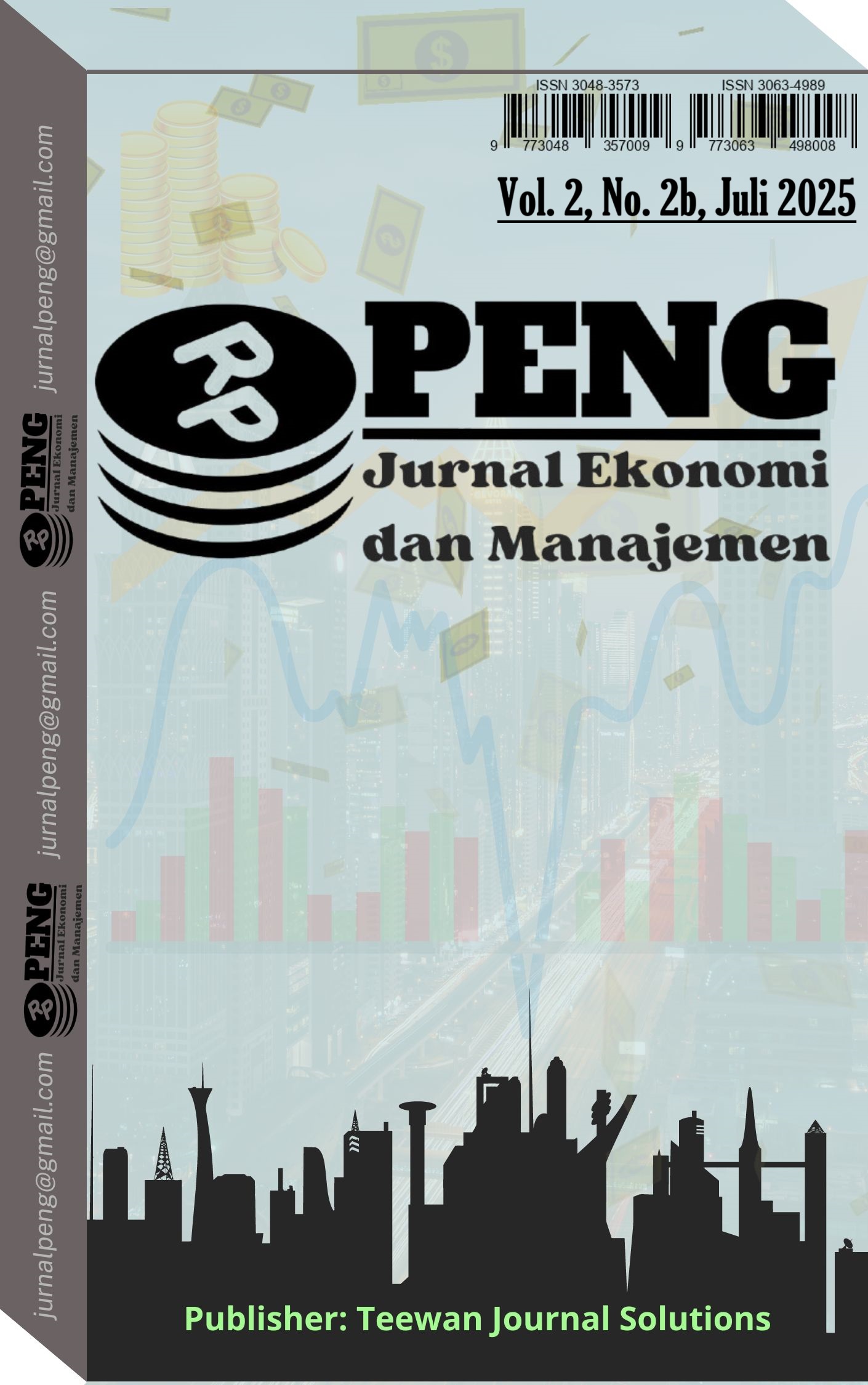Analisis Strategi Pemasaran Negatif Terhadap Kepercayaan Konsumen pada Perusahaan Skincare: Studi Kasus SS Skin
DOI:
https://doi.org/10.62710/6g0z0a32Keywords:
Marketing strategy; Overclaim; Business ethics; Consumer trust; Digital promotionAbstract
This anality aims to analyze the impact of negative marketing strategies on consumer trust in local skincare companies through a case study of SS Skin. A descriptive qualitative approach was employed using netnographic observation, and digital document analysis. The results show that promotional content containing hyperbolic claims such as “bright skin in 3 days without irritation” creates unrealistic expectation, leading to disappointment when actual outcomes differ. Sentiment analysis of netizen comments revealed dominant negative responses including distrust toward the brand and regulatory institutions. Compared to other cases like Scarlett Whitening and Kylie Skin, SS Skin’s failure in crisis communication worsened public perception. This study concludes that negative marketing strategies can cause systemic effects on the reputation of local brands and the overall trust in the skincare industry. Therefore, ethical, transparent, and evidence-based marketing communication is essential for building sustainable customer loyalty.
Downloads
References
Adella, Y. D. (2022). Peran Influencer terhadap Loyalitas Konsumen Gen Z. Jurnal Ilmu Ekonomi dan Sosial,, 10(2), 99–112.
Ajzen, I. (1991). The theory of planned behavior. Organizational Behavior and Human Decision Processes, (Vol. 50). doi: https://doi.org/10.1016/0749-5978(91)90020-T
Armstrong, A. D. (2015). Principles of Marketing. Australia: Pearson Australia Group Pty Ltd.
Chen, Y. L. (2022). Expectation-disconfirmation in cosmetic products: Impact on customer satisfaction and repurchase intention. Journal of Retailing and Consumer Services,, 64. doi:https://doi.org/10.1016/j.jretconser.2021.102764
Chu, S. C. (2022). The short-term effectiveness of manipulative advertising on social media. Journal of Interactive Advertising,, 22(1), 25–39. doi:https://doi.org/10.1080/15252019.2022.2054552
Creswell, J. W. (2018). Qualitative Inquiry & Research Design: Choosing Among Five Approaches (4th ed.). SAGE Publications.
Fauzia, A. Z. (2021). Analisis Pengaruh Brand Image, Perceived Quality,, 1068 -1072.
Fauzia, A. Z. (2021). Analisis Pengaruh Brand Image, Perceived Quality, dan Country of Origin terhadap Minat Beli Produk Skincare Luar Negeri. IRWNS, 1068–1072. Hämtat från https://penerbitadm.pubmedia.id/index.php/jurnalemak/article/view/2391/2473
Festinger, L. (1957). A theory of cognitive dissonance. Stanford University Press.
Gefen, D. B. (2023). The consumer trust framework: Credibility, integrity, and reliability in digital transactions. Information Systems Research, 34(1), 12–30.
Henger, R. L. (2017). Perceived dishonesty in advertising: The effect on brand attitude. Journal of Consumer Behaviour, 16(5), 412–423.
Jin, S. V. (2021). Influencer marketing and beauty misperceptions among teens. Journal of Business Research,, 136, 494–507. doi:https://doi.org/10.1016/j.jbusres.2021.07.032
Kotler, P. &. (2016). Marketing Management (15th ed.). Pearson Education.
Kotler, P. &. (2018). Principles of Marketing (17th ed.). Pearson.
Liu, M. Z. (2023). Evidence-based trust in digital marketing: A review. Journal of Marketing Science, 41(3), 301–320.
Morgan, R. M. (1994). The commitment-trust theory of relationship marketing. Journal of Marketing, 58(3), 20–38. doi:https://doi.org/10.2307/1252308
Nasution, A. R. (2023). Pengaruh promosi digital terhadap minat beli dan kepercayaan konsumen pada brand lokal. Jurnal Ilmu Manajemen dan Bisnis,, 14(1), 34–45.
Petty, R. E. (1986). The elaboration likelihood model of persuasion. Advances in Experimental Social Psychology,, 19, 123–205. doi:https://doi.org/10.1016/S0065-2601(08)60214-2
Putri, D. F. (2023). Strategi pemasaran digital dan loyalitas konsumen produk skincare lokal. Jurnal Manajemen Pemasaran,, 11(2), 44–56.
Rahmawati, T. N. (2022). Strategi pemasaran digital brand lokal kosmetik di Indonesia. Jurnal Ekonomi Digital Indonesia,, 6(1), 70–80.
Riha, A. (2021). Cultural adaptation in Korean beauty products: Global-local influences in Southeast Asia. Asian Consumer and Culture Review,, 9(3), 155–167.
Searle, J. R. (1969). Speech acts: An essay in the philosophy of language. Cambridge University Press.
Shaw, A. (2019). Hyperbolic advertising and consumer backlash in skincare. Journal of Ethical Marketing, 8(2), 110–125.
Sokolova, K. &. (2021). The power of negative influence: When influencer behavior backfires. International Journal of Advertising, 40(7), 1116–1135. doi:https://doi.org/10.1080/02650487.2020.1836925
Tsai, W. S. (2022). Negative marketing and consumer skepticism. Journal of Marketing Ethics, 19(1), 31–46.
Yim, C. K. (2008). Strengthening customer loyalty through intimacy and passion: Roles of customer–firm affection and customer–staff relationships in services. Journal of Marketing Research,, 45(6), 741–756. doi: https://doi.org/10.1509/jmkr.45.6.741
BPOM. (2024). BPOM. Retrieved from Peraturan BPOM Nomor 18 Tahun 2024 tentang Iklan dan Label Produk Kosmetik.
EU Regulation . (n.d.). EU Regulation . Retrieved from European Commission: https://eur-lex.europa.eu/legal-content/EN/TXT/?uri=CELEX%3A32013R0655
FTC (Federal Trade Commission). (2023). FTC (Federal Trade Commission). Retrieved from Truth in Advertising Guidelines.: https://www.ftc.gov/news-events/media-resources/truth-advertising
Lee & Kim. (2022). Regulation of cosmetic claims and testimonials in South Korea. Journal of Health Policy Korea.
Detik.com. (2025). Shella Saukia Melabrak Dokter Detektif di Live TikTok. Retrieved from Detik.com: https://www.detik.com
Kompas.com. (2025). Kontroversi SS Skin dan BPOM: Kasus Overclaim Produk Skincare. . Retrieved from Kompas.com: https://www.kompas.com
Radar Tuban. (2025). Omzet SS Skin Anjlok Setelah Kasus Viral. Retrieved from Radar Tuban.: https://radartuban.jawapos.com
Downloads
Published
Issue
Section
License
Copyright (c) 2025 Ikmila Khoerunnisa, Halimah Zahrah, Novi Ramadani (Author)

This work is licensed under a Creative Commons Attribution-NonCommercial-ShareAlike 4.0 International License.










